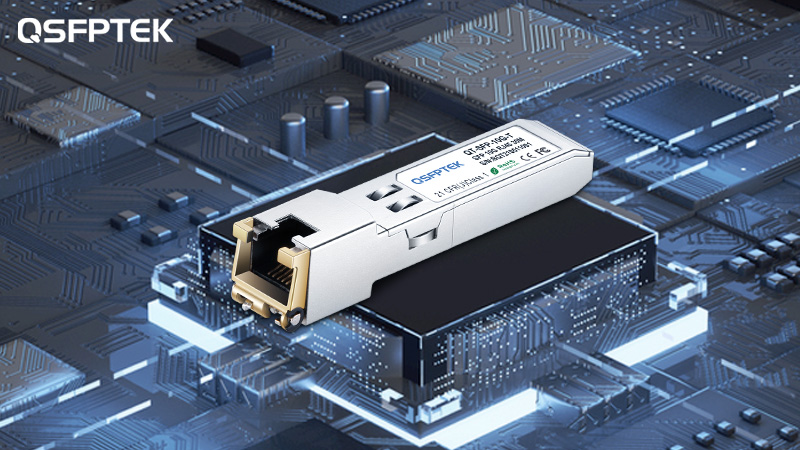In the context of the substantial growth of global data traffic, the construction of data centers tend to develop in the direction of cloud computing, and cloud computing data centers will adopt 10g or even 40g/100g and other high-speed network applications based on optical fiber transmission, such as 10GBASE-SR, 10GBASE-LR, 40GBASE-SR, and 100GBASE-SR, etc. At the same time, the application of virtualization technology also puts forward higher requirements for network transmission, which brings new opportunities to the application of optical fiber systems. The controversy of “light advance and copper retreat” is becoming more and more intense in the industry.
When we always pay attention to the above industry trends and information, does it indicate that copper cabling has gradually come to an end? In view of this conjecture, this paper will analyze the market changes and development direction of copper cabling system from the development and application occasions of copper cabling related standards.
Standard Development Direction of Copper Cabling System
Among the transmission media of Ethernet of 1000BASE-T and below, CAT5e, CAT6 and other copper twisted pairs have absolute advantages. With the development of 10Gbps (10 Gigabit) ethernet based on copper twisted pair as the transmission medium. The IEEE 802.3an 10GBASE-T specification was approved for release in June 2006. The specification supports traditional twisted pair cable, and the port is connected with standard RJ45 connector, which can be downward compatible with Ethernet Applications of 1000BASE-T and below. Cat6a copper twisted pair can support 10GBASE-T transmission distance up to 100m, while CAT6 twisted pair can support 37m 10GBASE transmission, so that new users can use the original twisted pair cable.
Progress from 40gbase-t standard: IEEE 802.3 has established the NGbase-t research group in July 2012. The key points of the research are shielded cables for data centers, focusing on length, power consumption, etc; ISO / IEC TR 11801-99-x wd2 includes two parts: one is the shielding device support based on cat6a and cat7, which supports 25m transmission and the frequency range is 1 ~ 1000MHz; The second is to support 50m transmission based on new devices, with a frequency range of 1 ~ 1600MHZ or 2000MHz; ANSI / TIA 568C under Committee TLA 42.7 2-1 define the cable as cat8, clearly use RJ45 interface, support channel length of 50m, link length of 40m, and frequency range of 1 ~ 2000MHz.
From the perspective of the clear standard development direction of the international organization for standardization, we do not see the route of abandoning copper cable to a higher level. The development of standards is always related to applications. The key is to see the specific application direction.

New Building Project Cabling System
In the new building cabling project, the solution of supporting 1000BASE-T Gigabit Ethernet to desktop with category 6 copper cable occupies a huge market share. In addition, the 10GBASE-T Ethernet standard based 10GBASE-T network device port has the performance of automatic downward compatibility with Gigabit 1000BASE-T, 100m 100Base-T and other low-speed Ethernet. The application case of 10GBASE Ethernet to desktop also increased greatly in 2012. Compared with the data center, in building projects, most of the current desktop terminal LT devices use RJ45 based copper ports. In commercial building projects, 10 Gigabit copper interfaces will have absolute advantages. The copper twisted pair suitable for 10 Gigabit Ethernet transmission will be mainly cat 6a, which supports 10 Gigabit Ethernet transmission at a distance of 100m (Cat 6 supports 37m).
The 10GBASE-T 10 Gigabit Ethernet standard released by IEEE 802.3an adds a new content than previous similar standards: the requirements for external crosstalk. Due to the excellent external crosstalk characteristics of various shielded wiring links, the tested external crosstalk performance is more than 10dB higher than the standard requirements, while the unshielded wiring links need to pass the complex external crosstalk test to ensure that the wiring system meets the requirements of 10 Gigabit transmission. The transmission medium cat6a shielding series of 10GBASE-T Ethernet will have the advantages of practical application. The research of FTM consulting predicts that the growth rate of shielded twisted pairs will reach 26.4% in the next five years, which is higher than that of unshielded twisted pairs. The prediction of third-party institutions also verifies this direction.
Conclusion
Due to the extensive use of virtualization technology in data centers, especially cloud computing data centers, the requirements for network transmission delay, network bandwidth, port energy consumption and wiring density are becoming higher and higher. The applications above 10 Gigabit are based on copper twisted pair transmission wiring systems, which has certain limitations in delay, port energy consumption and wiring density. At the same time, under the influence of a large number of factors such as tor architecture, copper cabling in the cabling system of the data center does not have application advantages for a long time.
Due to the fact that the cost of cabling in buildings is more than 80% than that in the early stage, the energy consumption of cabling systems tends to account for more than 80% of the market. In addition, terminal equipment in the work area adopts the mainstream RJ45 interface, and has the adaptive function of network downward compatibility based on RJ45 interface, and copper network equipment has more obvious price advantages than optical network equipment ports. Therefore, copper twisted pair cabling systems will still be the first choice of building cabling systems for a long period of time. If you’re finding 10GBASE-T transceivers or 10GBASE-T cable, you are welcome to visit QSFPTEK.COM, or contact QSFPTEK via sales@qsfptek.com.